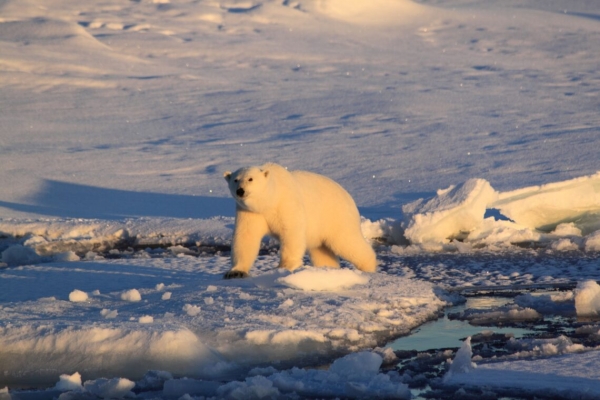New research from the University of Washington and Polar Bears International in Bozeman, Montana, quantifies the relationship between greenhouse gas emissions and the survival of polar bear populations. The paper, published online Aug. 31 in Science, combines past research and new analysis to provide a quantitative link between greenhouse gas emissions and polar bear survival rates.
A warming Arctic is limiting polar bears’ access to sea ice, which the bears use as a hunting platform. In ice-free summer months the bears must fast. While in a worst-case scenario the adult bears will die, before then they will lose the ability to successfully raise cubs.
“Until now, scientists hadn’t offered the quantitative evidence to relate greenhouse gas emissions to population decline,” said second author Cecilia Bitz, a UW professor of atmospheric sciences.
Read more at: University of Washington
A polar bear photographed in the Greenland Sea in September 2012. (Photo Credit: Cecilia Bitz/University of Washington)


